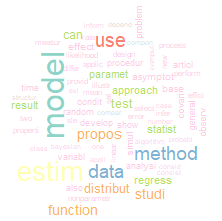
How do the keywords in statistics-related peer-reviewed papers eveolve from 2003 to 2012?

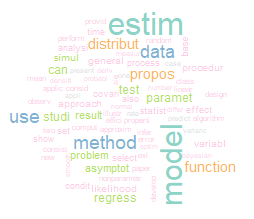
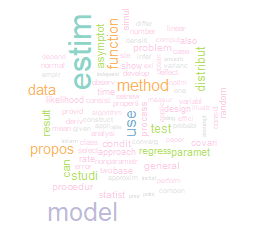
From the word cloud illustration, we can tell that the words ‘method’ and ‘estim’ have always been widely used. The word ‘use’ as been used more often starting 2006. ‘Model’ and ‘data’ have been used less often as time goes, but they are still one of the most popular keywords.
How do the collaborators of scholar "Peter Hall" change over time? How does his keywords in his published paper evolve?
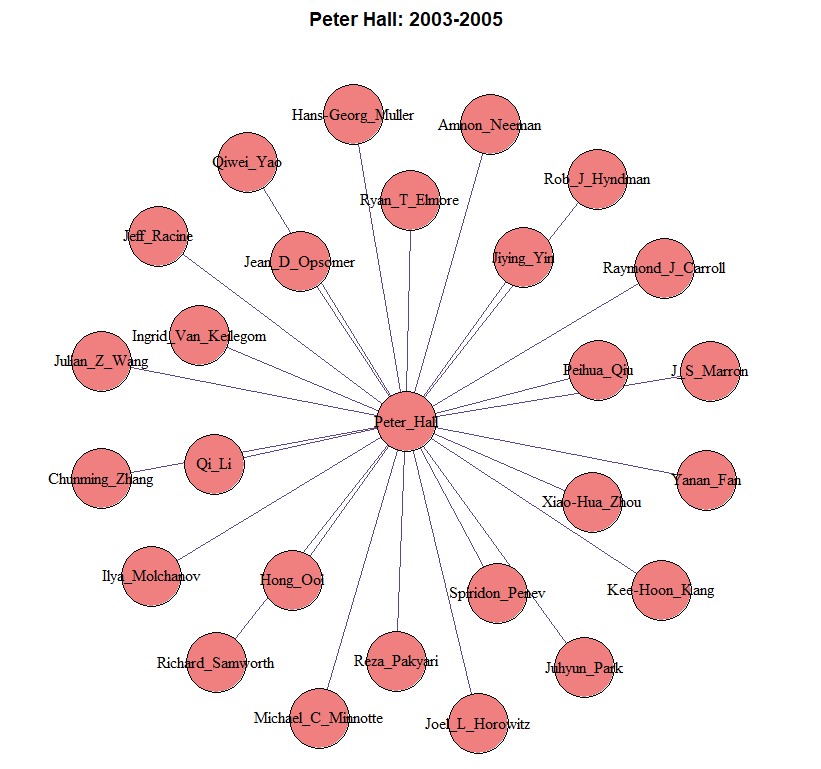
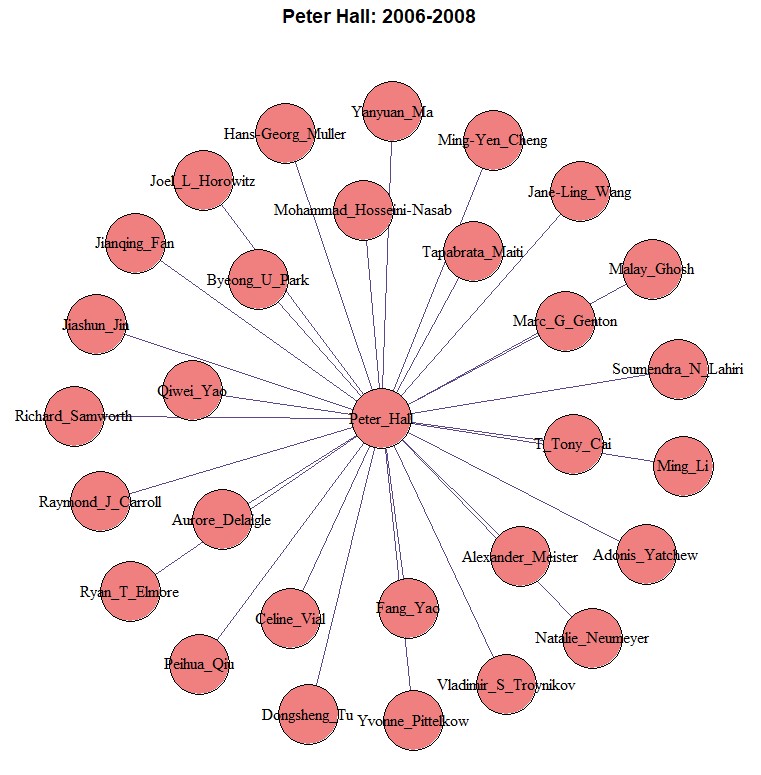
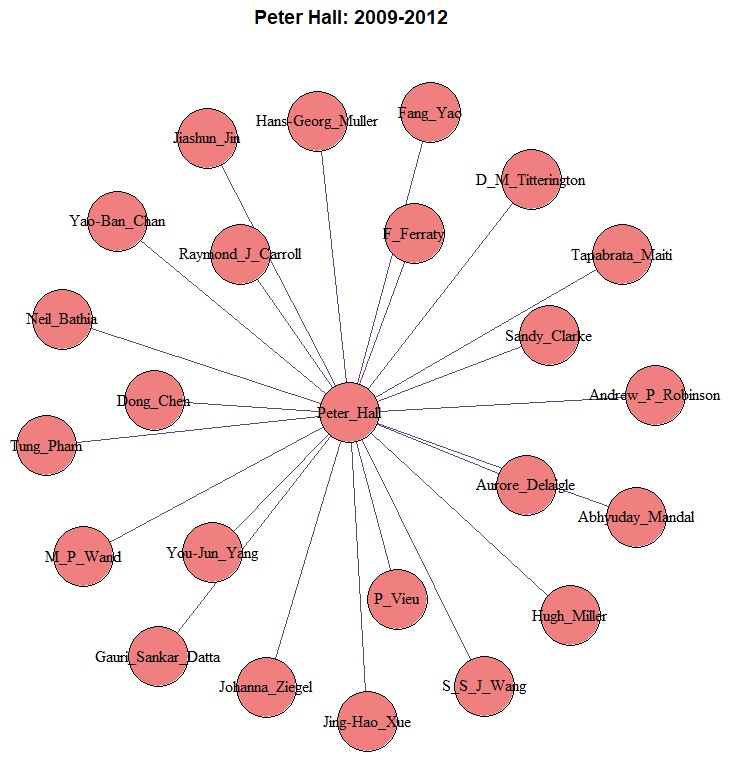
From 2003 to 2008, he has been collaborating with roughly the same amount of people, with a slight increase in number (from 26 to 29 collaborators) from 2003-2005 to 2006-2008. Starting 2009, he seemed to collaborate a little less, as the average number of collaborators decreases from 10 (29/3) per year to 8 (31/4) per year. Hall worked with the same two authors (Hans-Georg Müller and Raymond J. Carroll) in all three time periods. There were four authors that he worked with twice from 2003-2005 to 2006-2008 (Peihua Qin, Qiwei Yao, Richard Samworth, and Ryan T. Elmore), and he worked with three same authors (Aurore Delagle, Fang Yao, and Jiashun Jin) in 2006-2008 and 2009-2012. Since he has been working with slightly fewer people, to expand this pattern, he may collaborate with fewer people in the future, possibly around 6 people per year. He can possibly collaborate with Hans-Georg Müller and Raymond J. Carroll in the future because they have collaborated extensively before.
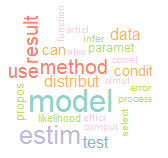
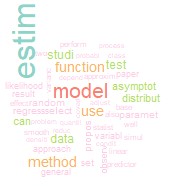
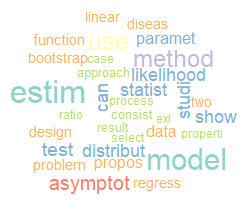
Comparing to the global visualization, we can see that the most used keywords are very similar for the time period from 2003 to 2005, i.e., “method”, “model”, “estim”, “data”, and “use”. Hall’s trend is also similar to the global trend in terms of the wide use of the word “estim”, “method”, and “model” in all times. The decrease of using “data” over time occurs both in the global trend and in Hall’s trend. However, comparing to the decrease use of “model” as time goes in the global trend, Hall’s trend shows a decrease use of this word in the period of 2006-2008, but he soon came back to widely using this word in the visualization of keywords from 2009 to 2012.
U.S. Airline Network Visualization
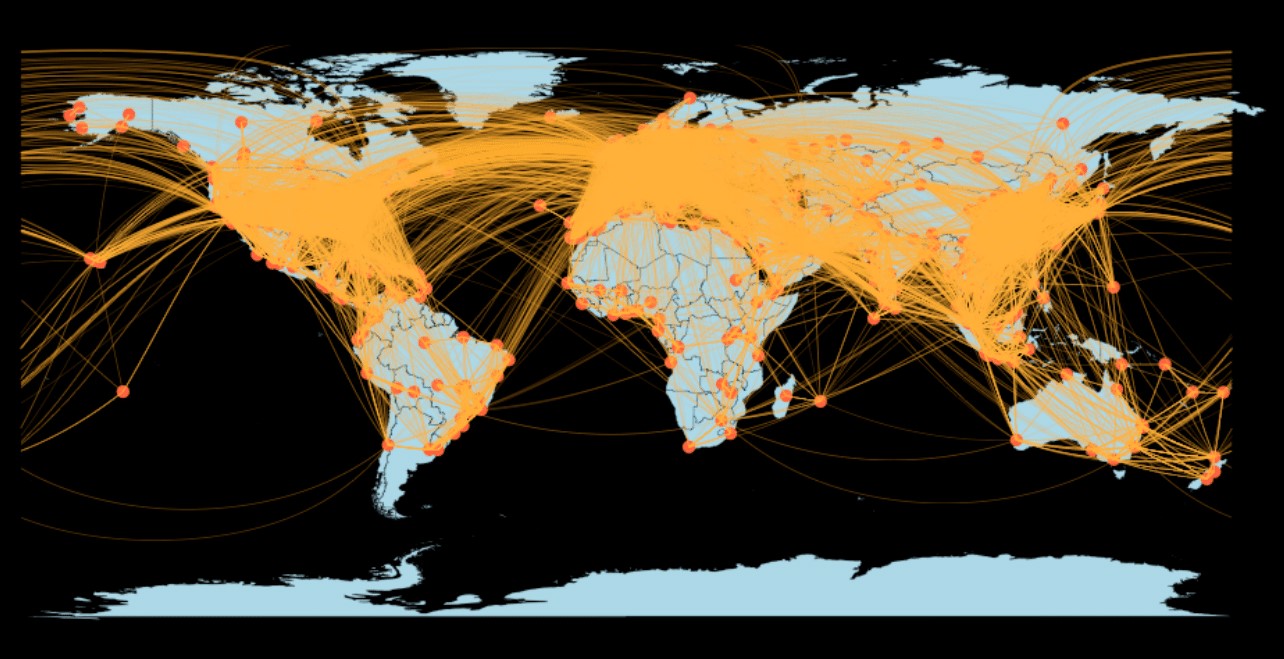
A visualization of flights that take off or land in U.S.
Juedging from GA data, is there evidence that Trump or Biden conducted fraud during the 2020 election?
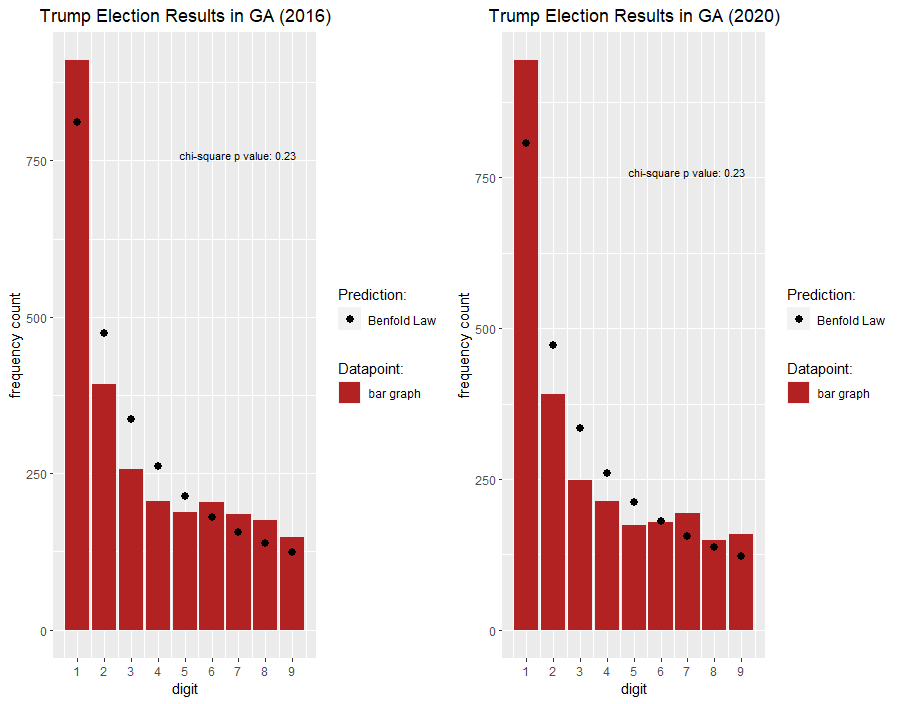
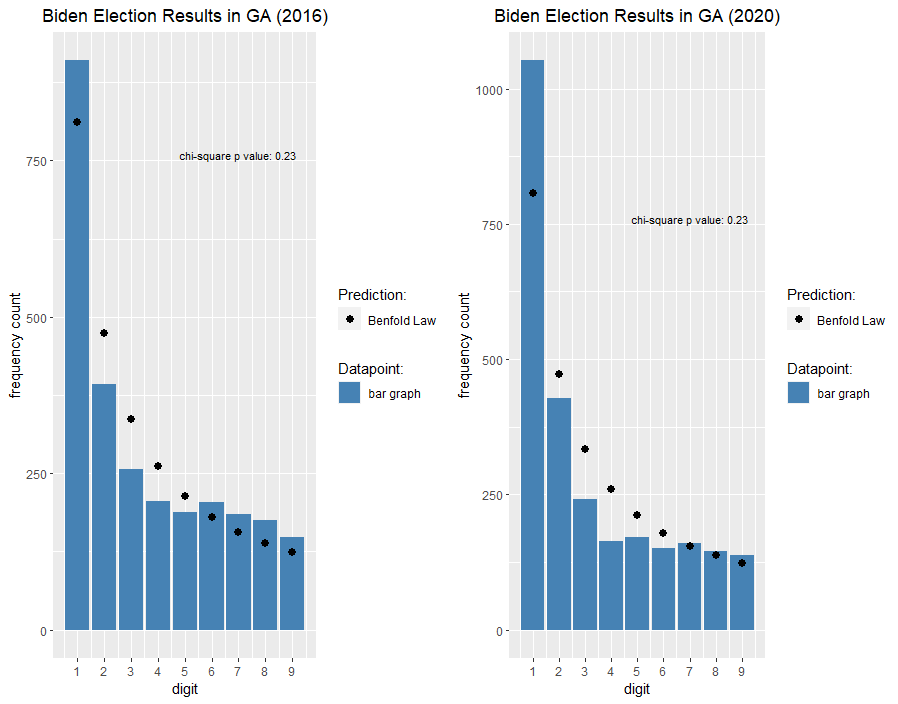
Newcomb-Bneford's Law: also known as the first-digit law, states that the frequency distribution of leading digits in real-world scenarios follow a certain pattern.
The voting results from GA for both Biden and Trump roughly follow the Benfold’s law(black dots), for both general election and recount. Since the chi square values are greater than 0.05 for both general and recount, there is no significant evidence showing that Benfold’s law is violated for Trump or Biden. In addition, Trump’s and Biden’s 2020 election voting pattern are similar to their own voting patterns in 2016 respectively. Since there is no evidence saying there is fraud in the 2016 election for Trump and Biden, it indicates that the 2020 election result doesn’t imply cheating for Trump or Biden.
America Average Ozone Abudance Over Years In Given Geographic Locations
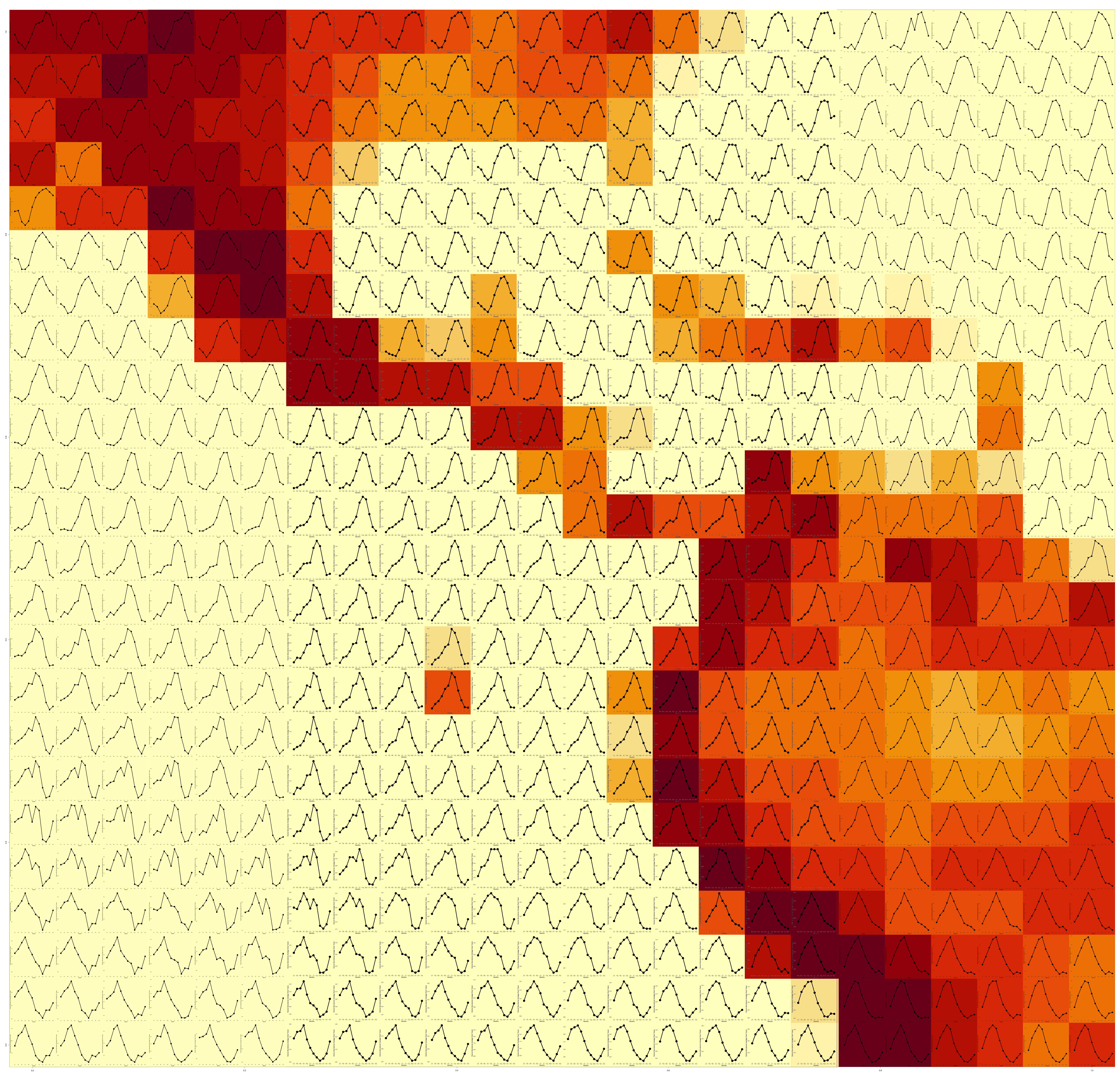
Each grid represents a geographical location, with darker colors symbolizing higher elevations.
Each grid plots the Ozone concerntration over years for each month.
Picture is large in size, feel free to zoom in for detailsDuring competitions, do juedges tend to be biased towards players from their own countries?
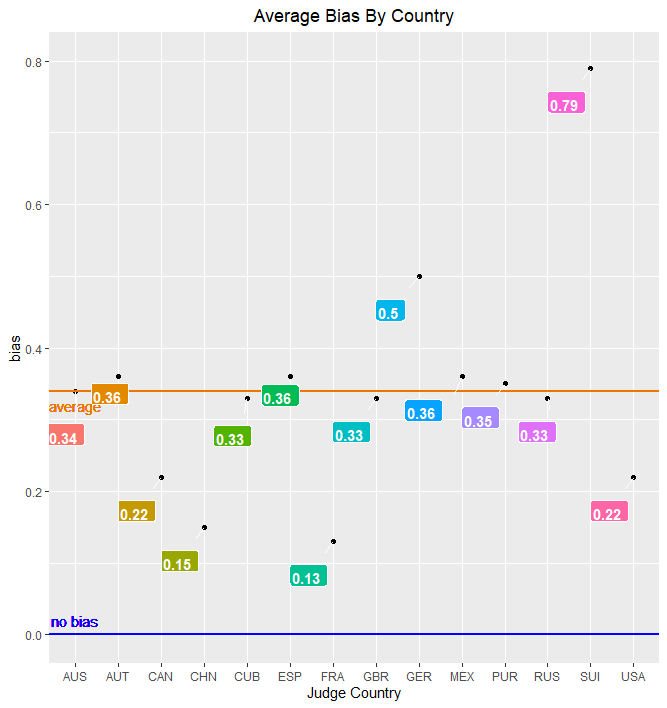
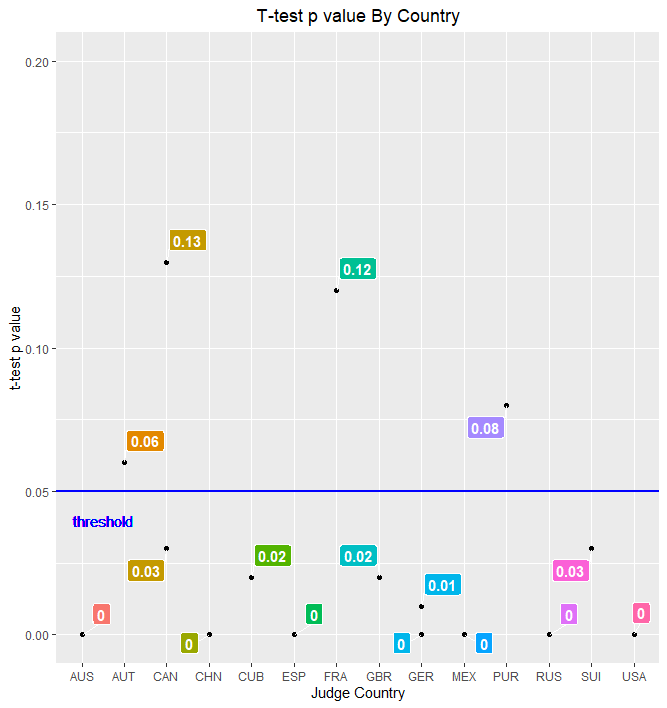
Switzerland has a p value smaller than 0.05 and the highest average bias level, making it the most biased country. Australia, Canada, France and Puerto Rico all have p values greater than 0.05, suggesting that there is not significant evidence to say judges from these countries are biased. The rest of the countries all have some degrees of biases, with Germany, Switzerland and Austria having the highest biases.